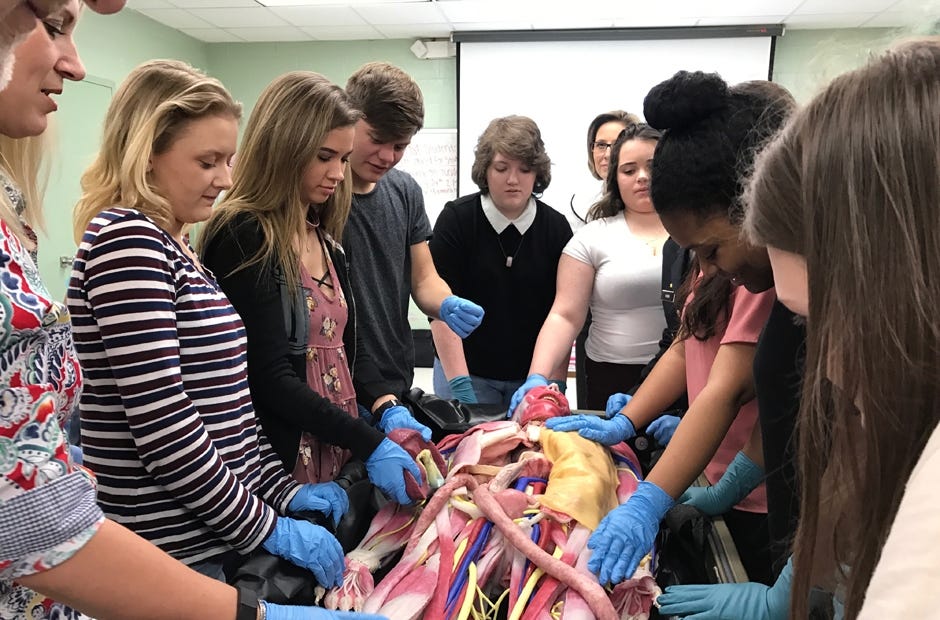
CRESTVIEW — This week, Crestview High School received a special visitor in a body bag.
Inside was a lifelike synthetic human made of water, salt and fiber. SynDaver Labs in Tampa created the synthetic person as a medical device to replace cadavers. The model included realistic replicas of a person’s anatomy including skeletal, muscular, cartilaginous and vascular systems. Just fat and skin were absent from the model.
Such realism enhances the educational process, according to Dr. Tammy McKenzie, CHS’s Health Science Anatomy and Physiology teacher.
“When you can touch it and be a part of it, that’s when [learning] sticks,” McKenzie said.
Her classes usually rely on drawings and diagrams to learn anatomy and physiology. Students practice basic medical procedures using an old CPR model and oranges. When McKenzie saw the model during a medical conference, she knew she had to get one in the classroom, she said.
Using actual cadavers is a difficult, costly practice according to McKenzie, who practiced on them during her time in medical school. They require licensing, legal forms, controlled storage conditions and offer little to no reusability, she said. Cadavers are also complicated to learn identification from because they are completely gray and difficult to move.
McKenzie’s students could easily handle and identify SynDaver’s organs, muscles and arteries, which were colored to distinguish them from one another.
Other SynDaver products feature artificial blood and vitals, which allow students to practice medical procedures in a realistic environment without a living model. The devices can also be ordered with injuries to allow for more specialized practice.
This was the first high school presentation of the SynDaver anatomical model in Florida, according to sales manager Conar Mahon. Typically, presentations are conducted at medical schools, universities and in professional environments.
McKenzie’s “big goal” is to have a SynDaver model in the classroom. This will better prepare students for the medical field and create a more hands-on learning environment, she said. The full-size model costs about $64,000; she hopes to partner with area health care businesses and professionals to sponsor the school's purchase of one.
Students had no hesitation getting hands-on during the presentation, despite the model’s slight odor. McKenzie identified various structures within the synthetic cadaver as students grasped lifelike muscles and uncoiled intestines.
Older students put on gloves and were ready to explore before the class bell rang. McKenzie explained to these advanced classes more specific functions and had students identify internal parts.
Each class concluded with photo opportunities for social media, something typically prohibited in McKenzie’s classroom, she said. Students photographed the model and took selfies with their visitor.

This article originally appeared on Crestview News Bulletin: Synthetic human enhances CHS students' learning
